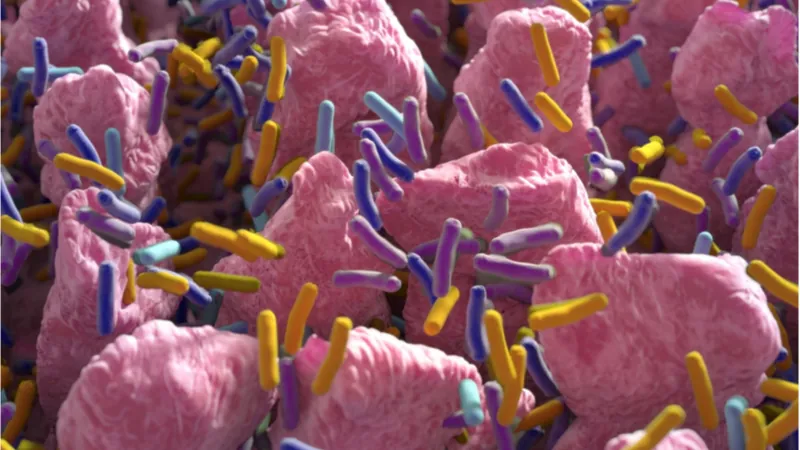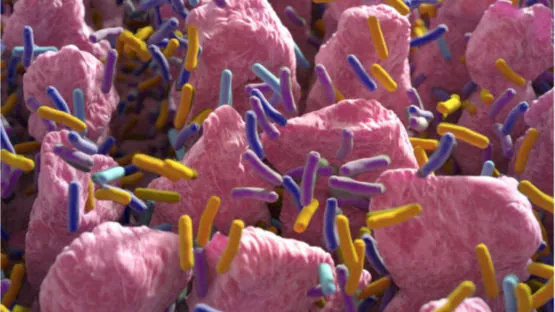A new study suggests that harmful changes to the population and diversity of our gut bacteria may occur when we are as young as our mid 30s, which can have serious implications for health and longevity.
The microbiome
The gut microbiome is a complex and ever-changing ecosystem populated by a myriad of archaea, eukarya, viruses, and bacteria. Four microbial phyla, Firmicutes, Bacteroides, Proteobacteria, and Actinobacteria, make up 98% of the total population of the intestinal microbiome.
The microbiome is a complex ecosystem that regulates various aspects of gut function along with the immune system, the nutrient supply, and metabolism. It also helps to control the growth of pathogenic bacteria, protects from invasive microorganisms, and maintains the intestinal barrier.
As we age, the composition and diversity of the microbiome changes, as the beneficial bacteria populations tend to decline and the harmful bacteria often increase in numbers. One emerging hypothesis is that these changes to the gut microbiome lead to detrimental changes elsewhere in the body and could potentially be the origin point of inflammaging, the chronic low-grade smoldering background of inflammation typically observed in older people.
Many other studies have documented that the range, numbers, and diversity of bacteria in the gut microbiome decline as we get older, while this study has shown a 1.4-fold increase, possibly due to its participants eating a different diet. However, the studies are in agreement that gut microbial changes are linked to the development of a variety of diseases.
Studying the microbiome
In their new study, the researchers provide evidence that harmful changes to the microbiome can actually occur as early as our 30s [1]. These changes include alteration not only to the population and diversity of bacteria in the gut but also to the various compounds they produce, including short-chain fatty acids such as butyrate. The goal of the study was to show the link between those microbial changes and the loss of function associated with aging.
Composition of the gut microbiota changes during ageing, but questions remain about whether age is also associated with deficits in microbiome function and whether these changes occur sharply or progressively. The ability to define these deficits in populations of different ages may help determine a chronological age threshold at which deficits occur and subsequently identify innovative dietary strategies for active and healthy ageing. Here, active gut microbiota and associated metabolic functions were evaluated using shotgun proteomics in three well‐defined age groups consisting of 30 healthy volunteers, namely, ten infants, ten adults and ten elderly individuals. Samples from each volunteer at intervals of up to 6 months (n = 83 samples) were used for validation. Ageing gradually increases the diversity of gut bacteria that actively synthesize proteins, that is by 1.4‐fold from infants to elderly individuals. An analysis of functional deficits consistently identifies a relationship between tryptophan and indole metabolism and ageing (p < 2.8e−8). Indeed, the synthesis of proteins involved in tryptophan and indole production and the faecal concentrations of these metabolites are directly correlated (r2 > .987) and progressively decrease with age (r2 > .948). An age threshold for a 50% decrease is observed ca. 11–31 years old, and a greater than 90% reduction is observed from the ages of 34–54 years. Based on recent investigations linking tryptophan with abundance of indole and other “healthy” longevity molecules and on the results from this small cohort study, dietary interventions aimed at manipulating tryptophan deficits since a relatively “young” age of 34 and, particularly, in the elderly are recommended.
Conclusion
Studies like this can provide valuable insights into how the microbiome changes with age and offer potential solutions to offsetting those changes. There is some evidence in mice that supplementing the loss of the short-chain fatty acid butyrate improves health, and the same may apply to humans. More research is needed, but it is plausible that better health as we age can be supported via interventions focused on the microbiome.
Literature
[1] Ruiz‐Ruiz, S., Sanchez‐Carrillo, S., Ciordia, S., Mena, M. C., Méndez‐García, C., Rojo, D., … & Ferrer, M. (2019). Functional microbiome deficits associated with ageing: Chronological age threshold. Aging cell.



